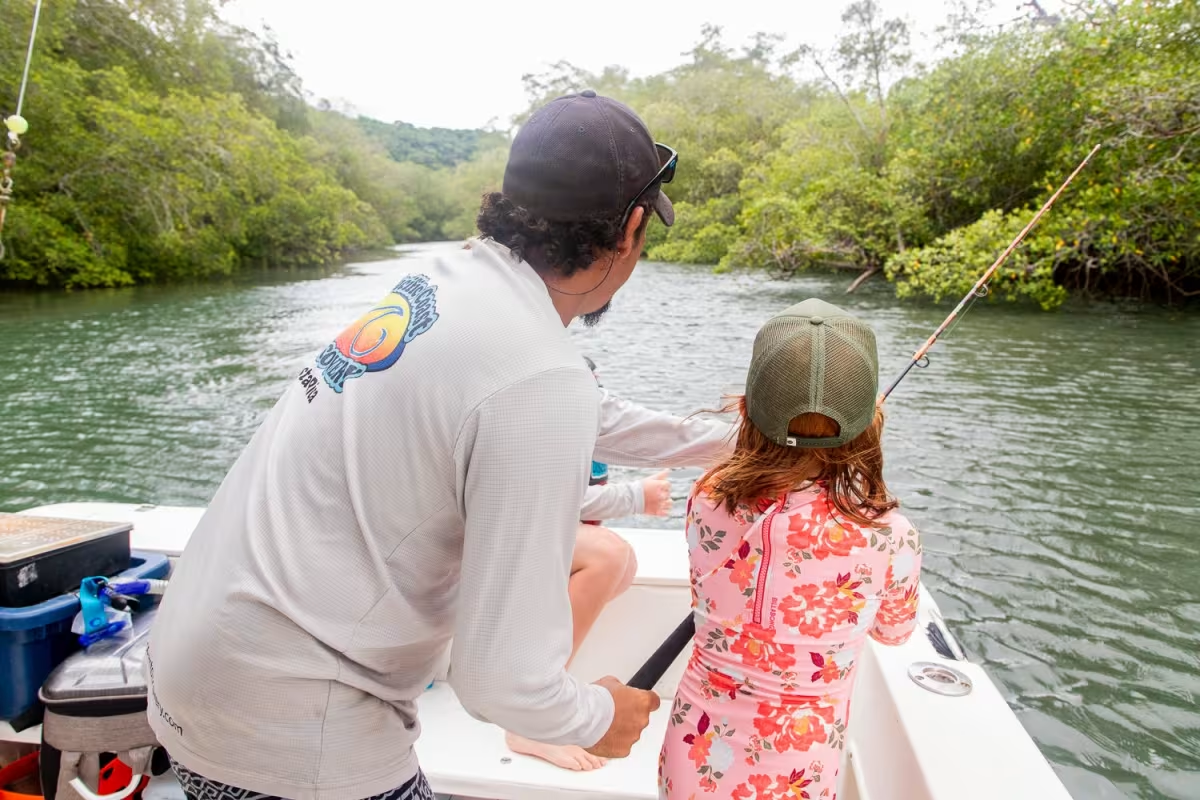Enjoy a Tour Through the Mangroves
Mangrove and estuary tours offer an engaging way to explore some of the Costa Rica’s most important ecosystems. These guided tours follow winding waterways lined with mangrove forests, giving visitors a close-up view of the unique environments where freshwater meets the ocean. Popular destinations include the Tamarindo Estuary in Guanacaste and the Isla Damas mangroves near Manuel Antonio. Tortuguero National Park on the Caribbean side of Costa Rica and the Osa Peninsula also offer mangrove exploration.
Tours typically take place on covered boats or kayaks. Both options allow travelers to navigate narrow canals and tunnels, observing the mangrove roots, local flora, and wildlife. Guests often spot monkeys, iguanas, crocodiles, and a variety of birds including herons, kingfishers, and motmots. The calm pace of the tours makes them accessible to all ages, and the guides provide detailed explanations about the ecosystem, its wildlife, and the critical role mangroves play in coastal protection and marine life breeding.
Mangroves serve as nurseries for hundreds of fish, crabs, shellfish, and other species. They filter saltwater, stabilize sediment, reduce the impact of waves, and protect shorelines from erosion. During the tour, guides highlight these functions and explain how mangroves support both wildlife and local communities. Visitors also learn about specific trees such as the Guanacaste, Costa Rica’s national tree, and hear about the cultural and historical significance of the surrounding area.
Tours generally run two to three hours and are best scheduled for early morning or late afternoon when wildlife activity is highest.
Overall, mangrove and estuary tours in Costa Rica provide a peaceful and informative way to explore the country’s unique coastal ecosystems. They are ideal for nature lovers, families, and anyone seeking an accessible, educational wildlife experience in a scenic setting.
FAQs about Mangrove Tours in Costa Rica
Why are mangroves important?
They act as natural barriers against coastal erosion, provide habitat for wildlife, and support fisheries by serving as nurseries for many marine species.
What regions are best for mangrove tours?
Popular locations include Tamarindo in Guanacaste, Isla Damas near Manuel Antonio, the canals of Tortuguero, the Osa Peninsula, and areas around Puntarenas.
What wildlife can I expect to see?
Crocodiles, iguanas, monkeys, sloths, crabs, and a wide range of bird species. In some regions, you might also spot manatees or dolphins.
Are these tours suitable for families?
Yes. The tours are calm, done by stable boats, and last a manageable two to three hours. They’re ideal for all ages.
Do the tours depend on tides?
In some areas like Isla Damas, yes. The timing of your trip may be adjusted to match high or low tide for the best experience.










